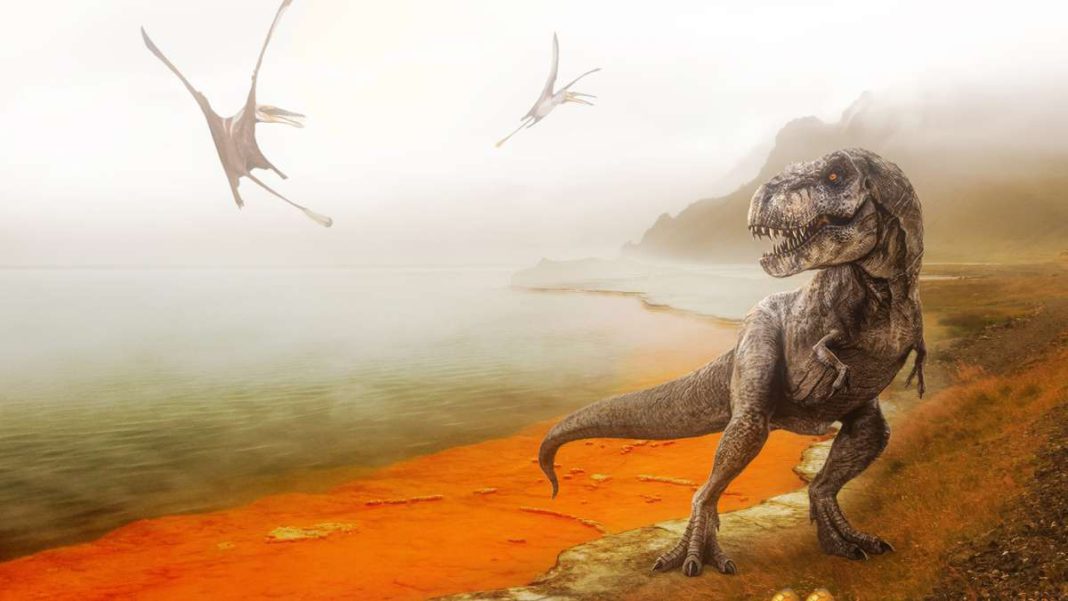MEXICO: In a new study published in the journal Nature Geoscience, scientists have unveiled a long-standing mystery surrounding the mass extinction event that wiped out the dinosaurs from Earth nearly 66 million years ago. Contrary to previous theories, this research suggests that fine dust, generated by the colossal asteroid impact, played a pivotal role in disrupting the Earth’s ecosystem.
The extinction event, triggered by the asteroid’s collision with a shallow sea near what is now Mexico, has long baffled scientists due to the complex sequence of events that followed. Previous studies proposed that the release of sulphur and soot from widespread wildfires led to a global winter, causing a drastic drop in temperatures.
However, this new research, led by planetary scientist Cem Berk Senel, posits that the primary cause of the mass extinction was the fine dust ejected into the atmosphere by the impact. This fine dust, composed of pulverized rock, significantly blocked the sun’s rays, inhibiting the process of photosynthesis in plants, a crucial mechanism for sustaining life on Earth.
The study indicates that this disruption persisted for almost two years following the catastrophic event, which in turn had a profound impact on the global food web and resulted in a chain reaction of extinctions. Cem Berk Senel, the lead author and a postdoctoral researcher at the Royal Observatory of Belgium, explains, “Photosynthesis shutting down for almost two years after the impact caused severe challenges. It collapsed the food web, creating a chain reaction of extinctions.”
To arrive at these findings, scientists harnessed the power of technology, creating a sophisticated computer model to simulate the global climate immediately after the asteroid strike. This model incorporated existing data on Earth’s climate at the time and incorporated new information from sediment samples collected from the Tanis fossil site in North Dakota. These samples covered a 20-year period following the impact, providing invaluable insights into the Earth’s environment during that era.
The research team also meticulously examined data from samples of silicate dust particles that were propelled into the atmosphere by the impact before settling back on Earth. Astonishingly, it took a staggering 15 years for these dust particles to finally return to the planet’s surface. The scientists suggest that the global climate may have cooled by as much as 15 degrees Celsius during this extended period of darkness and disruption.
This study not only sheds light on the enigmatic events that brought an end to the age of the dinosaurs but also underscores the critical role that fine dust and its effects on photosynthesis played in shaping the Earth’s history. It highlights the remarkable advances in scientific research and technology that continue to unravel the mysteries of our planet’s distant past, providing valuable insights into the forces that have shaped our world.



